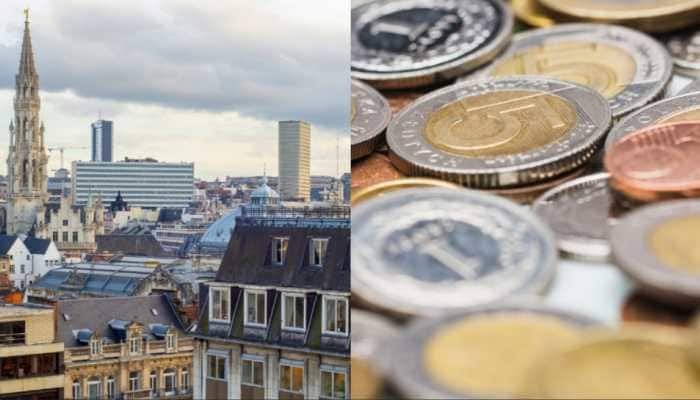How Savarkar used inter-caste dining as a tool for social reform, excerpts from Vikram Sampath’s book
Vikram Sampath's new book Savarkar: A Contested Legacy (1924-1966) sees the event of inter-caste dining in a new light.
- Vikram Sampath's new book documents Savarkar's life from 1924-66
- Talks about the concept of inter-caste dining
Trending Photos
)
Vikram Sampath is the author of three acclaimed books--Splendours of Royal Mysore: The Untold Story of the Wodeyars, My Name Is Gauhar Jaan: The Life and Times of a Musician and Voice of the Veena, S. Balachander: A Biography. His book Savarkar: Echoes from a Forgotten Past, 1883-1924 was a bestseller. He has now come up with Savarkar: A Contested Legacy (1924-1966).
Here are excerpts from the book:
“After the initiation of inter-dining in 1930, Savarkar used numerous occasions—be they family ceremonies or religious festivals—to propagate and popularize the concept. At times he would even put this as a precondition for his participation in events or staging of his plays. In March 1936, when the renowned Marathi theatre artist Bal Gandharva, a great admirer of Savarkar, insisted that he attend a play, Savarkar agreed to come if an inter- dining was organized after the staging. Bal Gandharva readily agreed and the playwas followed by sahabhojan. That same year, during Ganeshotsav on 26–27 August, inter-dining was organized, in which Prabodhankar, the father of Shiv Sena founder Bal Saheb Thackeray, too participated.”
“…among all his reform movements, the inter-dining seemed to face the maximum resistance from society. It was difficult to hire halls for conducting the dinners or even get a cook. Conservative Hindus began treating those who participated in Savarkar’s inter-dining programmes as outcastes. They refused to marry into the households of such people and boycotted them socially. Even if a person who participated in inter-dining was of their own caste, he/she was refuse entry into houses or disallowed from drawing water from the other’s wells. Priests refused to officiate in marriages or sacred thread ceremonies of inter-dining participants.”
“In course of time, the Patit Pavan Mandir became the venue for several conferences that brought together people of all castes. In end-February 1931, the Depressed Classes Mission led by V.R. Shinde held its sixth annual session at the temple and requested Savarkar to preside. The members concurred that if the successful social experiments conducted by Savarkar in Ratnagiri could be replicated across India, untouchability and caste barriers would be a thing of the past. The Ratnagiri District Somavanshiya Mahar Conference too was held in the temple on 26 April 1931. Hundreds of Mahars from all over Bombay Presidency participated and Savarkar presided over the conference. His work and speeches on these occasions brought in praise from Ambedkar in his newsletter Janata dated 11 May 1931. Savarkar lent his support to Ambedkar’s famous Nasik Satyagraha that began on 2 March 1930 to gain entry for the untouchables into the Kala Ram temple. Savarkar issued a statement that had he not been under the restrictions imposed on him by the government to not leave Ratnagiri or participate in political activities, he would have been among the first to participate and court arrest in the Nasik Satyagraha.”
“As a man of action and not mere preaching, Savarkar constantly urged his followers to demonstrate their resolve tangibly. In continuation of the lecture series (Vyakhyanamala) that Justice Ranade had begun in Poona, similar series were routinely organized in various parts of Maharashtra and covered sociocultural and political themes. At one such lecture series in Ratnagiri in May 1932, Savarkar said at the valedictory that Vyakhyanamalas were necessary in the times of Ranade and Chiplunkar, but what was the need of the hour was Kriyamalas—or action, not mere talk. The awakening needed to be transformed into actions in order to see tangible results.”
“On his decade-long struggle with his associates to usher in social reforms in the town, Savarkar writes:
In Ratnagiri, almost every Hindu had taken part in inter-caste dining or had taken food with those who did. In other words, inter-caste dining is no longer considered an objectionable deed. Within a period of ten years (1924 to 1934), we removed not only the shackles of untouchability but also of inter-caste dining. This social revolution is indeed praiseworthy. However, we must remember that it was like saying ‘It is better to make progress at the speed of a tortoise than no progress at all!’ Look at what other people have achieved in the last ten years. Russia progressed at the speed of an aeroplane, and we congratulate ourselves that we can walk without the support of a baby-walker. Still when we were almost dead, at least we have now started to walk, that is progress. We need to make this progress thousand fold.”
Stay informed on all the latest news, real-time breaking news updates, and follow all the important headlines in india news and world News on Zee News.
Live Tv







)
)
)
)
)
)
)
)
)
)
